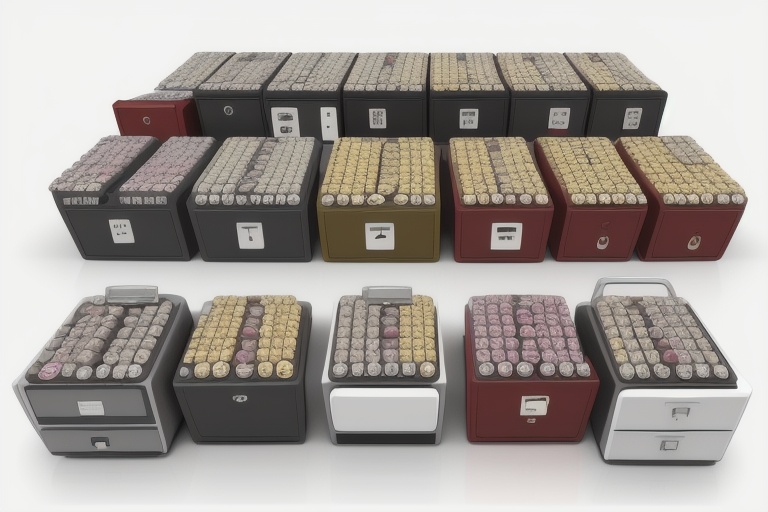Coin collecting might seem like an antiquated hobby to some, not often the subject of mainstream media or a trend that pops up frequently on social media feeds. Yet, this quiet pastime has been a favorite of many for centuries, and as a dedicated numismatist with extensive experience, I can assure you it is far from fading into oblivion.
Coin collecting might seem like an antiquated hobby to some, not often the subject of mainstream media or a trend that pops up frequently on social media feeds. Yet, this quiet pastime has been a favorite of many for centuries, and as a dedicated numismatist with extensive experience, I can assure you it is far from fading into oblivion.
Understanding Coin Collecting's Popularity Through Trends
To accurately assess the current state of coin collecting, one can look at its digital footprint, such as trends in Google search queries. From 2004 to 2020, a downward trend in searches for "coin collecting" might suggest a waning interest. However, this is only part of the story.
Delving deeper into search trends, it becomes clear that while there may be fewer searches for "coin collecting" and "rare coins," the interest in "valuable coins" has remained steady. This shift indicates a more nuanced approach by collectors, who are now possibly seeing coins not just as historical artifacts but also as potential investments and stores of value.
The Market Response to Changing Collector Interests
The numismatic market has responded to this evolving collector interest, favoring coins with intrinsic value like silver Mercury dimes over those with numismatic charm like Buffalo Nickels. Despite these changes, coin collecting, which dates back to the Renaissance, has always experienced fluctuations in popularity—much like the ebb and flow observed in other areas such as fashion and music.
One day, the interests of youth, possibly spurred by a pop culture reference, could bring about a resurgence in collecting unique coins like Standing Liberty Quarters. This potential for renewed interest underscores the cyclical nature of hobbies.
Personal Experiences and Family Traditions
At 23 years old, I find myself in a unique position within the community of coin collectors—being both an enthusiast and a conduit for sharing this passion. It's uncommon to find peers with a shared interest in numismatics, yet the spark of excitement when encountering someone new, particularly a younger individual, is palpable. Sharing a collection with them and watching their interest grow is part of the joy of this hobby.
I have a personal story that encapsulates the generational appeal of coin collecting. My grandfather, aged 81 and an avid collector, discovered our shared interest and is now always keen to discuss and impart wisdom about our collections. This connection through coins passes down familial knowledge and passion, testament to the enduring nature of our hobby.
Nurturing the Future of Coin Collecting
While coin collecting may not hold the same ubiquitous appeal as some modern hobbies, it's far from extinct. The key to perpetuating its relevance is education and exposure, particularly among the younger generation. The future of coin collecting is in the hands of those who can ignite a similar passion in others; thus, we must strive to introduce this fascinating world to novices and enthusiasts alike.
If the prospect of starting your collection interests you, I'd recommend perusing our article "4 Essential Items to Store and Handle Coins Properly!" which is packed with useful insights. Moreover, for those who already know a collector, our guide to the top 10 gifts for coin collectors should not be missed.
The Value of Professional Coin Grading
The question of whether to have one's coins professionally graded is a hot topic within numismatic circles, with opinions divided. Based on my decade of hands-on experience in both collecting and dealing, I would advocate for professional grading, particularly for coins of significant value or rare specimens.
Professional grading is carried out by reputable third-party companies like PCGS and NGC and involves a thorough evaluation of a coin's condition, authenticity, and overall worth. The process provides a standard by which all coins are judged, using a grading scale that ranges from 1 to 70—the pinnacle of perfection.
Benefits of having your coins professionally graded include a clear, impartial assessment of their condition, affirmation of their authenticity—increasingly important in a market plagued by counterfeits—and improved marketability, with graded coins often more sought after and easier to sell for their true value.
While not every coin necessitates this level of examination, particularly those of lower value, for significant pieces in your collection, the cost of grading could be a valuable investment, facilitating informed buying or selling decisions.
Coin Collecting: A Hobby with Lasting Appeal
In summary, coin collecting might be overshadowed by more modern pursuits, but it is far from becoming extinct. Collectors might now be swayed more by the monetary value of coins than their historic significance, but the allure of numismatics endures. Tales of shared interests across generations demonstrate the wide-reaching and lasting appeal of this fascinating pursuit.
To ensure the vitality of coin collecting, we must engage the younger audience and share the intrigue of this hobby. The future of coin collecting is not only dependent on our collective interest but also on our willingness to tap into the enthusiasm of the next generation. By embracing the evolving dynamics of the hobby and celebrating the unique stories that every coin holds, we can preserve this timeless pastime for many years to come.
Your insightful comments and personal stories are always welcomed. What's your take on the relevance of coin collecting today, and how do you see its role evolving? Share your views and participate in our engaging discussions to help shape the future of this enduring hobby.
Information for this article was gathered from the following source.




